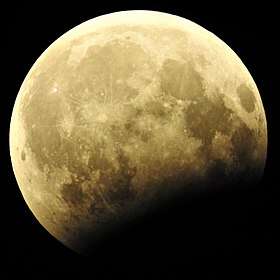March 2016 lunar eclipse
A penumbral lunar eclipse took place on March 23, 2016, the first of three lunar eclipses in 2016. The Moon was just 2.1 days before apogee, making it very small, so this was a "Micro Full Moon" penumbral lunar eclipse.
| Penumbral eclipse | |||||||||
| Date | 23 March 2016 | ||||||||
|---|---|---|---|---|---|---|---|---|---|
| Gamma | 1.1592 | ||||||||
| Magnitude | 0.7748 | ||||||||
| Saros cycle | 142 (18 of 73) | ||||||||
| Penumbral | 245 minutes, 27 seconds | ||||||||
| |||||||||
Visibility
It was visible from east Asia, Australia, and most of North America.
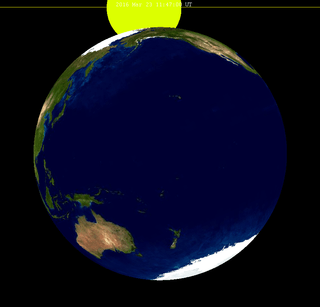 View of earth from moon at greatest eclipse |
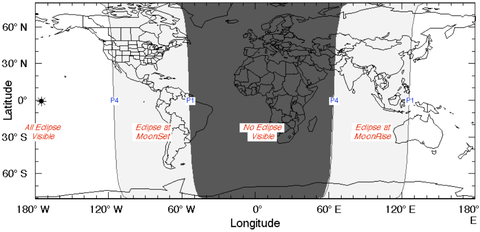 |
Related eclipses
Eclipses of 2016
- A total solar eclipse on March 9.
- A penumbral lunar eclipse on March 23.
- A penumbral lunar eclipse on August 18.
- An annular solar eclipse on September 1.
- A penumbral lunar eclipse on September 16.
This eclipse is the one of four lunar eclipses in a short-lived series at the ascending node of the moon's orbit.
The lunar year series repeats after 12 lunations or 354 days (Shifting back about 10 days in sequential years). Because of the date shift, the Earth's shadow will be about 11 degrees west in sequential events.
| Lunar eclipse series sets from 2013–2016 | ||||||||
|---|---|---|---|---|---|---|---|---|
| Ascending node | Descending node | |||||||
| Saros | Viewing date |
Type | Gamma | Saros | Viewing date |
Type | Gamma | |
112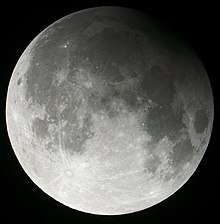 |
2013 Apr 25 |
Partial |
-1.0121 | 117_(cropped).jpg) |
2013 Oct 18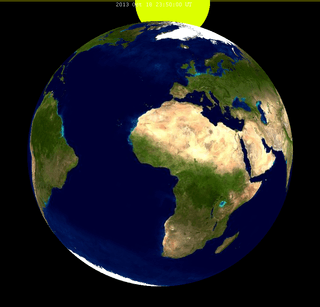 |
Penumbral |
1.1508 | |
122 |
2014 Apr 15 |
Total |
-0.3017 | 127 |
2014 Oct 08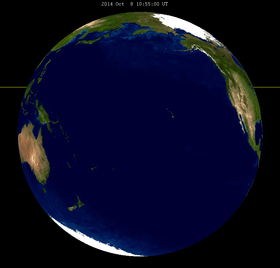 |
Total |
0.3827 | |
132 |
2015 Apr 04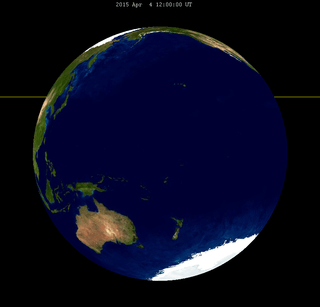 |
Total |
0.4460 | 137 |
2015 Sep 28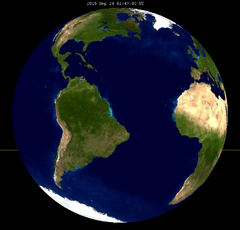 |
Total |
-0.3296 | |
| 142 | 2016 Mar 23 |
Penumbral |
1.1592 | 147.jpg) |
2016 Sep 16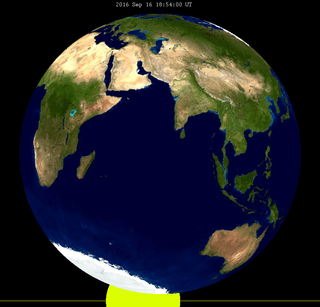 |
Penumbral |
-1.0549 | |
| Last set | 2013 May 25 | Last set | 2012 Nov 28 | |||||
| Next set | 2017 Feb 11 | Next set | 2016 Aug 18 | |||||
Half-Saros cycle
A lunar eclipse will be preceded and followed by solar eclipses by 9 years and 5.5 days (a half saros).[1] This lunar eclipse is related to two partial solar eclipses of Solar Saros 149.
| March 19, 2007 | March 29, 2025 |
|---|---|
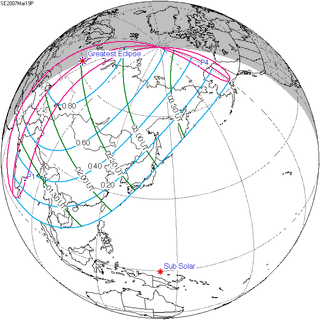 |
 |
See also
- August 2016 lunar eclipse, the second 2016 lunar eclipse (penumbral)
- September 2016 lunar eclipse, the third 2016 lunar eclipse (penumbral)
- List of lunar eclipses and List of 21st-century lunar eclipses
References
- Mathematical Astronomy Morsels, Jean Meeus, p.110, Chapter 18, The half-saros
External links
- 2016 Mar 23 chart: Eclipse Predictions by Fred Espenak, NASA/GSFC
- Hermit eclipse: 23 Mar 2016 - Penumbral Lunar Eclipse
